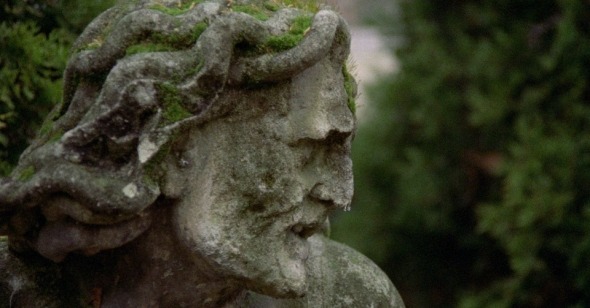Take Six: Reverse Shot in Time
The term “durational cinema” is sort of a funny one. Most often used to describe films with lengthy, unbroken takes, from the structuralist gambits of Chantal Akerman and Michael Snow to the existentialist narratives of Theo Angelopoulos and Béla Tarr, to, more recently in art-cinema vogue, the epic films of Lav Diaz, it seems to position movie-watching as a kind of endurance test. The term amuses because it implies that there is somewhere a type of cinema that is untouched by duration. Of course, cinema is always about duration, from the quickest cut to the longest, most open-ended camera rove. How much a filmmaker can contain in one passage—let’s call it a single space-time continuum—is the essence of the medium, regardless of matters of length. Remember, for André Bazin, cinema is elevated above photography for how it creates “an imprint of the duration of the object” onscreen.
We began a series of symposiums more than a decade ago in which we have asked contributors to isolate particular formal elements of cinema and use them as the starting points for essays. These “Takes” have centered on, in order, a single shot, cut, sound, color, and the use of screen aspect ratio. For Take Six, we’re focusing on that most cinematic of concepts: time. We gave our contributors the option to choose any single, unbroken passage of film. This does not necessarily mean a single take. And whether it’s nine seconds or ninety minutes or nine hours, it’s still valid for a discussion of how film harnesses and relies upon time.
It could be approached in any number of ways. One could inquire how the 11-hour runtime of Evolution of a Filipino Family allows Diaz to accomplish a type of historical storytelling that he couldn’t in two hours. Or investigate how experimental works that actively tell time like Bleu Shut and Christian Marclay’s The Clock affect the viewer; and whether this function is different than the timekeeping in a narrative film like Terminal Station. Then there are those show-stopping, real-time long takes that function in the context of movies that otherwise are not constructed as long takes, such as Children of Men, Goodfellas, or Nostalghia. Or the woman’s eyes opening in La Jetée—four heart-stopping seconds of motion picture in a film otherwise entirely made of stills.
What is contained in a particular passage of time? Or what is elided? How do performance, camera placement, music, cutting or not cutting contribute to the effect and point of this moment? How does the duration under discussion affect the viewing experience? What is the interplay between narrative event and duration, between story time and screen time? These are all possible questions that could be asked, but as our writers proved, they are by no means the only ones.
The results varied wildly—from split-second inserts in a Fassbinder film to an entire sequence by Nicolas Roeg; from the blink-and-miss-it horror of Val Lewton to a lengthy section of attenuated anti-suspense in Hitchcock; from the stasis of Sofia Coppola to the rapid all-at-once life stories of Jonas Mekas. Expansive as they are, these essays, as with the earlier entries in this series, can perhaps help us get to the heart of what makes this medium tick.
